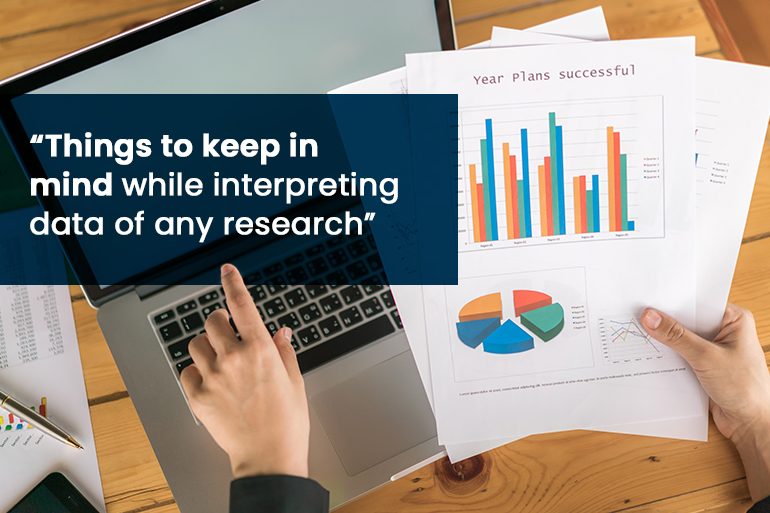Things to keep in mind while interpreting data of any research

Data interpretation lies at the heart of extracting meaningful insights from research. However, it is a complex task that requires careful attention and critical thinking. In this article, we explore the essential factors to keep in mind while interpreting data from any research study. By understanding these considerations, we can unlock the true potential of data and ensure accurate and reliable conclusions.
Contextual Understanding:
Interpreting data begins with developing a deep understanding of the research context. Familiarize yourself well with the study’s scope and objectives, research design, and the population or sample under investigation. This context provides the necessary background to interpret the data accurately and avoid misinterpretations or skewed conclusions.
Data Quality and Reliability:
Evaluate the quality and reliability of the data before drawing conclusions. Examine the data collection methods, sample size and representation, and the reliability of the instruments used. Be mindful of potential biases, errors, or limitations in the data collection process that could impact the validity of the findings.
Statistical Analysis:
Consider the statistical techniques used to analyze the data. Evaluate the appropriateness of the chosen statistical methods and ensure they match the research objectives and data type. Assess the significance levels, confidence intervals, and effect sizes to gauge the strength and reliability of the results.
Comparisons and Benchmarks:
Compare the research findings with relevant benchmarks or previous studies in the field. Analyze similarities, differences, and trends to gain deeper insights. Understanding how the current data aligns or diverges from existing knowledge provides a broader perspective and enhances the interpretative process.
Interpretation Within the Study’s Scope:
Remember that data interpretation should remain within the scope of the study. Avoid making broad generalizations or extrapolating the findings beyond what the research permits. Recognize the limitations of the study and its potential impact on the interpretation of data.
Consider Multiple Perspectives:
Engage in critical thinking by considering multiple perspectives and alternative explanations for the observed data patterns. Challenge assumptions and explore different hypotheses to ensure a comprehensive and nuanced interpretation. This approach guards against biased or premature conclusions.
Seek Expert Input:
When confronted with complex or intricate data, seek expert opinions or consult with colleagues well-versed in the subject area. Collaboration and dialogue enrich the interpretation process and provide valuable insights from diverse perspectives. Engaging with experts enhances the rigor and accuracy of your interpretations.
Communicate Uncertainty:
Acknowledge and communicate the inherent uncertainties associated with data interpretation. Research findings are not absolutes but rather probabilistic estimations based on the available data. Be transparent about the limitations and potential alternative explanations, fostering a realistic and balanced understanding of the research outcomes.
Consider Practical Implications:
Relate the interpreted data to its practical implications and real-world applications. Analyze how the research findings can contribute to and enhance decision-making, policy formulation, or practical interventions. By bridging the gap between data interpretation and practical implications, you ensure the relevance and impact of the research.
By keeping these key considerations in mind, you can navigate the maze of data interpretation with confidence, drawing appropriate conclusions and contributing to the advancement of knowledge in your field. Embrace the power of data interpretation, and let it be the guiding light that illuminates your research journey.